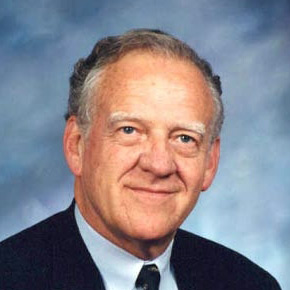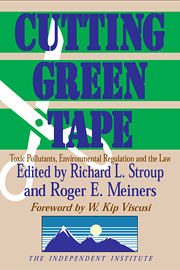On June 22, President Obama signed the Family Smoking Prevention and Tobacco Control Act (FSPTCA), a law that gives the U.S. Food and Drug Administration (FDA) regulatory authority over tobacco products. The law requires the FDA to develop a new tobacco-regulation center with all related costs to be covered by fees paid by the industry. Among other things, the FDA will regulate nicotine content, which cannot be increased, ban flavored cigarette sales (except for menthol-flavored products), and regulate marketing practices, eliminating the use of such words as “light” or “low tar” unless it can be shown empirically that the words are associated with products that provide health benefits.
Empowered to regulate industry marketing practices, the FDA must develop warning labels that must cover 50 percent of the side space on cigarette packages. The labels must draw from a catalog of congressionally sanctioned phrases that include:
WARNING: Cigarettes are addictive. WARNING: Tobacco smoke can harm your children. WARNING: Cigarettes cause fatal lung disease. WARNING: Cigarettes cause cancer. WARNING: Cigarettes cause strokes and heart disease. WARNING: Smoking during pregnancy can harm your baby. WARNING: Smoking can kill you. WARNING: Tobacco smoke causes fatal lung disease in nonsmokers. WARNING: Quitting smoking now greatly reduces serious risks to your health.
As dramatic as this all seems, this extension of FDA powers received a somewhat mixed response from the medical and health-advocate communities.
John Cohn, a lung-disease specialist at Thomas Jefferson University Hospital in Philadelphia said, “It’s sort of like asking the police commissioner to regulate prostitution.” Perhaps Cohn anticipates agency capture of the sort typically seen in Washington.
Matthew Myers, president of the Campaign for Smoke-Free Kids, a leading lobbyist for the law, took a more optimistic but still somewhat guarded position. “You can stay with the status quo, with industry controlling the level of nicotine in products and companies deciding what health claims to make. Or you can give control to an agency with a history of scientific expertise in regulating products. This fills an important gap.”
All Bark
This somewhat tepid celebration was prompted by uncertainty about how the FDA would really manage its new authority. There is also the feeling that this statute, like many others, had a title that sounded more powerful than the content justified. The word “prevention” in the title sounds rather dramatic, but the teeth in the law itself are more like baby teeth than fully mature incisors. (Consider, for example, the exception made for menthol-flavored cigarettes.)
The politicians’ commentary that followed the law’s passage was much more boastful and self-congratulatory. Senator Edward Kennedy, long an advocate for more government control of the industry and sponsor of the Senate version of the law, exclaimed, “Miracles still happen. The United States Senate has finally said ‘no’ to Big Tobacco.”
Had Congress really said no?
In a way, Kennedy misstated what had actually happened. The Senate had not entirely said no. Indeed, the biggest of big tobacco, Altria Group, the producer of market-leader Marlboro, had lobbied long and hard for the bill’s passage. Altria’s two major competitors, Lorillard and Reynolds Tobacco, saw the law as giving Marlboro, with its market share locked and a lead in developing no-nicotine products, an unfair advantage. As is often the case, the Senate picked a winning horse and rode it. The Senate said yes to one and no to two others.
With Kennedy unable to lead the battle for his bill due to illness, Senator Christopher Dodd assumed leadership. Not quite as dramatic in his comment as Kennedy, but in a way equally inaccurate, Dodd said, “For more years than anyone can count, we’ve had an industry that’s gone basically unregulated.”
Unregulated Tobacco?
It is true that tobacco products have not been regulated by the FDA, though the agency has attempted to do so almost since its 1906 founding. But after decades of regulation by the Federal Trade Commission (FTC), the Federal Communication Commission (FCC), and Congress itself, hardly anyone who has followed the industry would say it has gone “basically unregulated.”
Instead, some would argue that it was regulation that defined the industry’s trade practices and, by doing so, maintained the industry’s high profits and expanded the sale of products in just those markets Tobacco-Free Kids and others worry about. (See John Calfee’s “The Ghost of Cigarette Advertising Past,” Regulation, Nov.-Dec. 1986.)
How could this be? Consider the following capsules that come from a long tobacco saga (these and more can be found in Bruce Yandle, et al., “Bootleggers, Baptists and Televangelists: Regulating Tobacco by Litigation,” University of Illinois Law Review, 2008):
Almost from the start, tobacco products were regulated. The first government efforts to control tobacco consumption date at least to 1629, when the colonial authorities in Massachusetts Bay prohibited settlers from planting tobacco except in small quantities used for medicinal purposes. (Kennedy’s position follows a historic Massachusetts tradition.) Health interest groups have a long history of activism as well. The focus was on cigarettes. There were several hundred anti-cigarette leagues in the United States with more than 300,000 total members by the turn of the nineteenth century.
Twenty-six states banned the sale of cigarettes to minors by 1890, and 16 states totally prohibited cigarette sales by the end of 1909. World War I is said to have been a stimulus for cigarette consumption. As a result of extensive lobbying by tobacco producers, by 1927 all of the state bans on sales to minors were repealed. As bans declined, state taxes appeared, beginning in 1921 in Iowa and spreading to nearly all states by 1960. Politicians learned that tobacco products were a mother lode for tax revenues. There were no more total bans.
The FDA was explicitly denied authority to regulate tobacco when Congress passed the Pure Food and Drug Act of 1906, which created the agency. Just before passing the act, nicotine, then listed as a drug, was removed from the U.S. pharmacopeia. This assured the FDA could not regulate nicotine as a drug. Since 1906, when amending the FDA act and related legislation, Congress has consistently rejected proposed amendments to grant FDA regulatory powers. Congress regulated the industry itself.
While scientific data may have been lacking, popular recognition of the harms from smoking showed up in expressions that developed for cigarettes and related ailments: coffin nails, smoker’s cough, gasper, wheezer, lung duster. Yet a 1938 Consumer Reports article on smoking and health indicated no scientific evidence of harm from smoking. Nevertheless, marketplace recognition of health problems led the tobacco companies to go on the attack: “Not a cough in a carload” and “Remember Juleps, forget your cough” (Chesterfield); “Not a single case of throat irritation due to smoking” (Camels); and “Why risk sore throats?” (Old Gold).
In 1950 the FTC issued cease-and-desist orders against major cigarette companies on all health-effect advertising. The commission found that all popular cigarettes were harmless for healthy smokers. On these grounds, comparative health claims–”less smoker’s cough,” for example–were prohibited. Later, when cigarette producers introduced filters and began to advertise levels of tar and nicotine, the FTC struck again. In February 1960 the FTC announced that it had negotiated a voluntary agreement with the tobacco companies to cut all tar and nicotine claims from cigarette advertising. The agency heralded the “industry-government cooperation.” The FTC action brought to an end health-effect advertising that had led to a sharp decline in tar-weighted cigarette sales and the demise of some of the stronger cigarette brands.
In 1964 the Surgeon General reported a causal connection between smoking and lung cancer, chronic bronchitis, and coronary disease. He also stated that “cigarette smoking is a health hazard of sufficient importance in the United States to warrant appropriate remedial action.” Immediately, the FTC initiated proceedings to regulate cigarette advertising. In a final proposed rule, the FTC called for all cigarette packages to carry this warning: “Cigarette Smoking is Dangerous to Health and May Cause Death from Cancer and Other Diseases.” Congress intervened, sharply rebuked the FTC, and in 1965 passed the Federal Cigarette Labeling and Advertising Act that required a milder warning: “Caution: Cigarette Smoking May Be Hazardous to Your Health.” The FTC was banned from further meddling for at least four years.
Cigarette Regulation May Be Fatal to New Entrants
In May 1969 the FTC attempted to require all cigarette advertising to warn that “Cigarette Smoking is Dangerous to Health and May Cause Death from Cancer, Coronary Heart Disease, Chronic Bronchitis, Pulmonary Emphysema, and Other Diseases.” Once again, Congress countered and passed the Public Health Cigarette Smoking Act of 1969, which banned all cigarette advertising on electronic media after January 1, 1971,and mandated that all cigarette packages bear a milder statement: “Warning: The Surgeon General Has Determined that Cigarette Smoking Is Dangerous to Your Health.” The ban on radio and TV advertising ended the public-health messages required by the FCC, which had been shown to cut cigarette consumption, and reduced most of the $200 million annual advertising cost for existing tobacco products. The ban also made it more costly for new entrants to gain market share.
In 1998, 46 state attorneys general negotiated a settlement with tobacco producers after several successful state suits against tobacco companies based on recovering the cost of Medicaid payments for tobacco-related illnesses. The settlement yielded payments to the states that totaled $200 billion, which converted to an average annual payment to each state of $180 million in perpetuity. To generate the revenue the tobacco producers were allowed to collude and raise prices, doubling the wholesale price of cigarettes. Total sales volume went down. Profits went up. In effect the tobacco firms became well-paid tax collectors for the states. The settlement also contained a rich set of regulations that affected the marketing of tobacco products to youthful consumers.
Industry-Serving Regulation
No, there is no evidence to suggest that tobacco has until now been “an industry that has gone basically unregulated.” But there is ample evidence that tobacco regulation has served the interests of the industry and the politicians that broker favors to the industry. Meanwhile, consumers of tobacco products, who are generally a lower-income population, have been denied the benefits of competitively determined product information; they also have unwittingly become major sources of revenue for state politicians, who generally provide more benefits to higher-income than lower-income consumers.
One can only speculate about what might have happened had the FTC not outlawed health-effects advertising and had the industry not become one of the more regulated industries in America.
Reprinted with permission. © Copyright 2009, Foundation for Economic Education.










